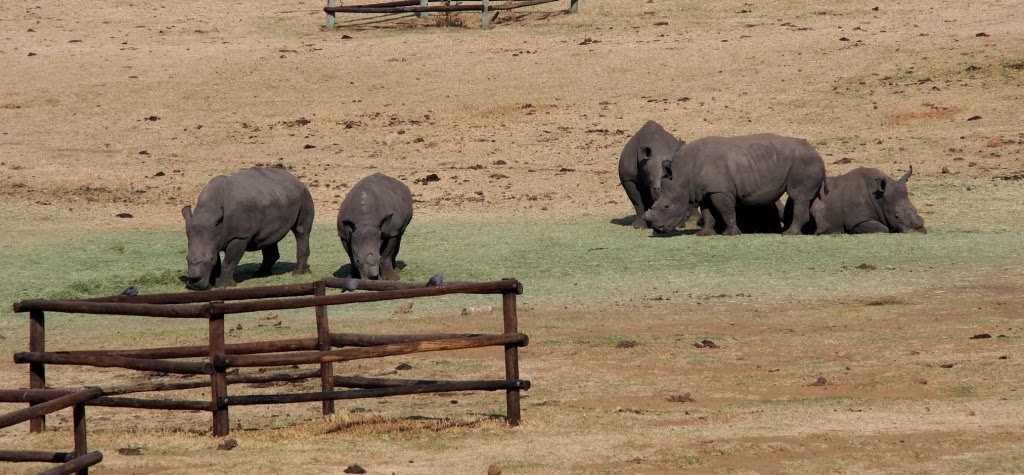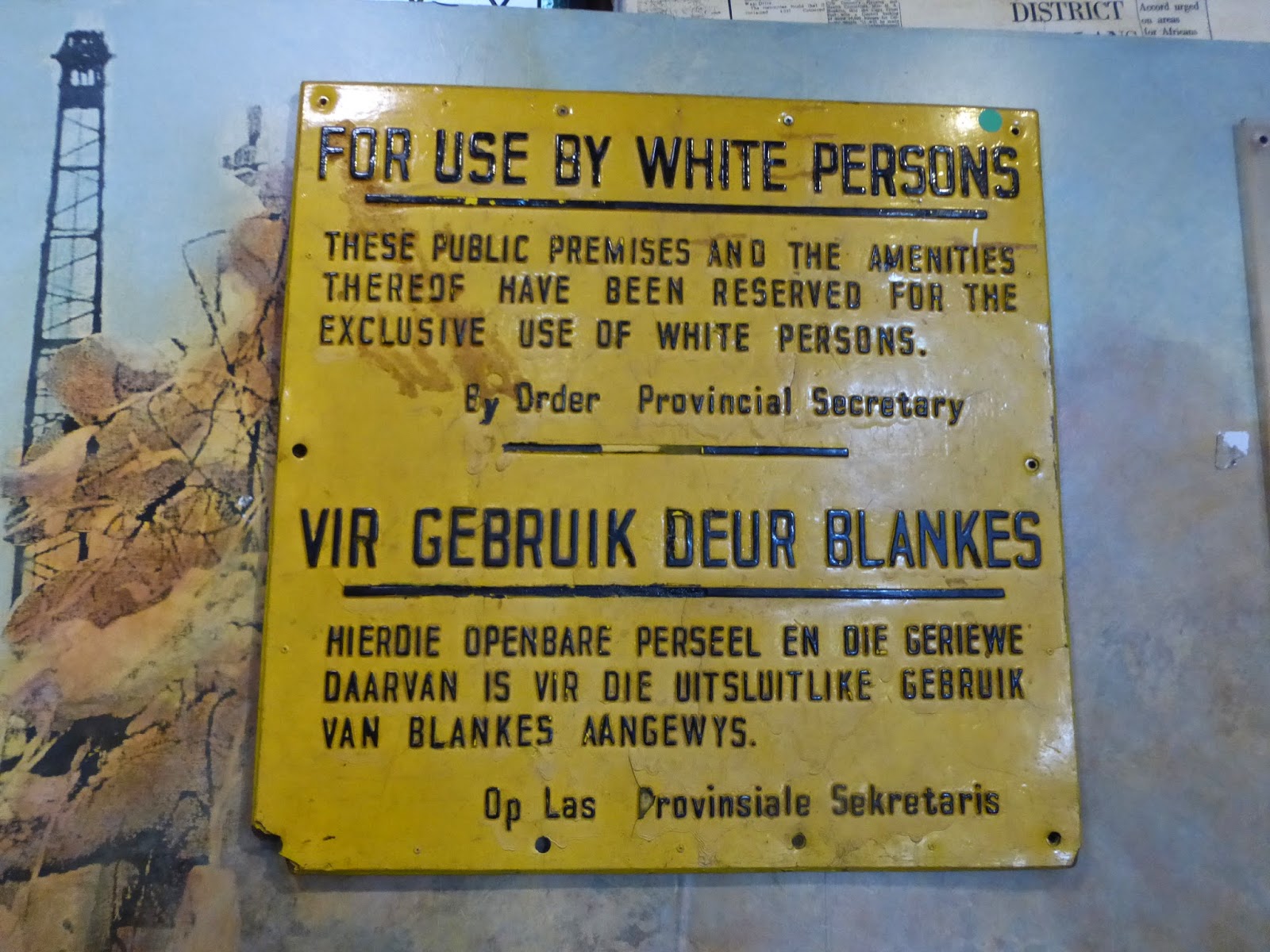Wake up time was 6 am so we could get an early start at 7.
Breakfast was tea and rusks. I had seen them on the trip description and
wondered what they were. They are not really all that impressive. They are
large chunks of dried bread, they aren’t sweet, and they are hard to bite because
they are big and, well... hard!
We had a long drive ahead of us and the guesthouse owner had packed us a wonderful breakfast in a fancy bag that looked like a gift bag. Our first rest stop was at a place beside the highway. There were washrooms, well actually they are called toilets here. Our guide said they are not for washing (washrooms), nor for resting (restrooms). So there!
We had a long drive ahead of us and the guesthouse owner had packed us a wonderful breakfast in a fancy bag that looked like a gift bag. Our first rest stop was at a place beside the highway. There were washrooms, well actually they are called toilets here. Our guide said they are not for washing (washrooms), nor for resting (restrooms). So there!
In back of the facility there was a large enclosure with
RHINOCEROUSES if you can believe that!
There were also a couple of ostriches, a type of deer or impala (there are so many kinds), and several types of birds gathered around a small pond.
Woohoo! Our first sighting of the Big Five! Granted, they were in a zoo-type of enclosure, but it still counts.
There were also a couple of ostriches, a type of deer or impala (there are so many kinds), and several types of birds gathered around a small pond.
Woohoo! Our first sighting of the Big Five! Granted, they were in a zoo-type of enclosure, but it still counts.
Our guide, Piet, is from Pretoria and is very knowledgeable.
He gave us a lot of information as he drove along the freeway. I learned that
Johannesburg has the most lightning of any city in the world. South Africa gets
half of the world’s average rainfall. The further west you go, the drier it
gets. There are no significantly sized lakes in South Africa.
After a while, we turned off the freeway and drove on a much narrower highway with less traffic. We went through an area that is very well-known for trout fly-fishing. The roads weren’t very good in spots and Piet told us that infrastructure funding is non-existant and that many municipalities are broke. Six million of South Africa’s 52 million pay taxes. 25-35 million are unemployed. Municipalities find it cheaper to put up stop signs than put up traffic lights.
After a while, we turned off the freeway and drove on a much narrower highway with less traffic. We went through an area that is very well-known for trout fly-fishing. The roads weren’t very good in spots and Piet told us that infrastructure funding is non-existant and that many municipalities are broke. Six million of South Africa’s 52 million pay taxes. 25-35 million are unemployed. Municipalities find it cheaper to put up stop signs than put up traffic lights.

Gold was first discovered in South Africa in 1886 but they
are no longer number one in the world for production. The easy gold has already
been taken out and it is very costly to dig any deeper. They are presently
going through the tailings and finding more gold that way.
Their main crop is maize or corn which is South Africans’
staple food. Potatoes are also grown along with soya, wheat, citrus, sugar and
sunflowers, to name a few. South Africa has been self sufficient but it is
under threat. 80% of the people here are black, 8% are white and 12% are
colored and Indian (Piet’s words, not mine). Black farmers have been
subsistence farmers, while white farmers have had large commercial operations.
Most trees in this country are planted and introduction of
non-native species has caused problems. Eucalyptus trees have become weeds.
People have been allowed to cut the trees, especially near rivers. Because of
that, rivers are flowing again and helping to provide much needed water. Burning
occurs every 4 years to clear dead branches and undergrowth. It was quite hazy all
day and Piet said that was from burning as well as dust. There is less than 5%
humidity in the air.
There is a lot of coal produced and electricity comes from
coal generated stations. Power outages are happening more and more.


We arrived in the town of Pilgrim’s Rest by noon and stopped
at the cemetery as well as a few other picture stops.
Pilgrim’s Rest came into being during the gold rush and there were many colorful characters whose stories had been handed down. The road to Pilgrim’s Rest got quite windy and hilly and the views were quite spectacular.
Our lunch was at a little pub and we sat outdoors in the shade. The cool of the morning had given way to toasty heat. I had a delicious South African dish called vetkoek. It is a delicious pastry with various fillings and I choose the chicken and mayo. Yum! But not low cal I’m sure.
Pilgrim’s Rest came into being during the gold rush and there were many colorful characters whose stories had been handed down. The road to Pilgrim’s Rest got quite windy and hilly and the views were quite spectacular.

Our lunch was at a little pub and we sat outdoors in the shade. The cool of the morning had given way to toasty heat. I had a delicious South African dish called vetkoek. It is a delicious pastry with various fillings and I choose the chicken and mayo. Yum! But not low cal I’m sure.
Pilgrim’s Rest is quite a touristy town with lots of neat
shops and I found a beautiful traditional beaded necklace and bracelet hand
made by some women sitting out in front of the shop. They might have been Zulu?
I don’t know. I should have asked but I did ask to take their photo.



After a good stop there, we headed onto the town of Graskop
then did a scenic loop 20 minutes beyond that. We had three picture stops. The
first one was Lisbon Falls, a beautiful pair of waterfalls cascading 50-70
meters below.
Then we visited Wonder View which was a great lookout on the
lowveld below. South Africa is like an upside-down saucer and we were on the highveld.
It was still quite hazy.
Our last stop was called the Pinnacle and we saw it from 2
points of view. The rocks are very interesting and a bit like at the top of
Cape Town’s Table Mountain.

We headed back to Graskop and checked into our hotel. We had
a few hours before supper so I set off to investigate some of the local art and
crafts in the nearby shops. I love the beaded wire animal sculptures! There
were some huge ones in Pilgrim’s Rest, but I settled on some nice little
keychains.


Supper was at a nearby restaurant where I had a burger for a
change.
















